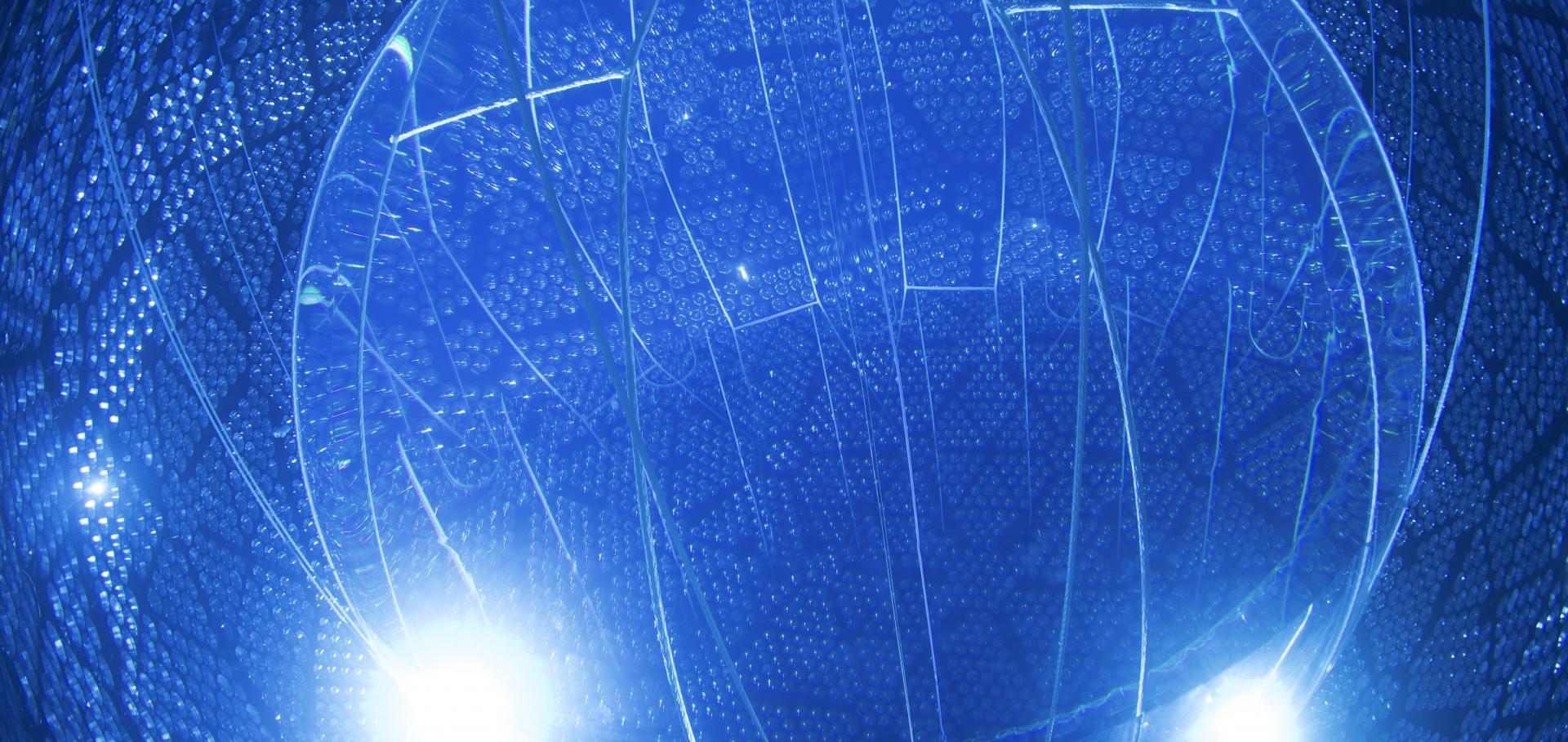Measurement of the rate of nu(e) + d --> p + p + e(-) interactions produced by (8)B solar neutrinos at the Sudbury Neutrino Observatory.
Phys Rev Lett 87:7 (2001) 071301
Abstract:
Solar neutrinos from (8)B decay have been detected at the Sudbury Neutrino Observatory via the charged current (CC) reaction on deuterium and the elastic scattering (ES) of electrons. The flux of nu(e)'s is measured by the CC reaction rate to be straight phi(CC)(nu(e)) = 1.75 +/- 0.07(stat)(+0.12)(-0.11)(syst) +/- 0.05(theor) x 10(6) cm(-2) s(-1). Comparison of straight phi(CC)(nu(e)) to the Super-Kamiokande Collaboration's precision value of the flux inferred from the ES reaction yields a 3.3 sigma difference, assuming the systematic uncertainties are normally distributed, providing evidence of an active non- nu(e) component in the solar flux. The total flux of active 8B neutrinos is determined to be 5.44+/-0.99 x 10(6) cm(-2) s(-1).Measurement of the rate of ve + d → p + p + e- interactions produced by 8B solar neutrinos at the sudbury neutrino observatory
Physical Review Letters 87:7 (2001)
Abstract:
The 8B flux from elastic scattering (ES) and charged current (CC) of electrons was recorded at the Sudbury Neutrino Observatory (SNO) between November 2, 1999 and January 15, 2001. Data were partitioned into two sets then analyzed. As a result, the first direct indication of a nonelectron flavor component in the solar neutrino flux was established.Measurement of the Rate of nu_e + d -> p+p+e- Interactions Produced by B-8 Solar Neutrinos at the Sudbury Neutrino Observatory
Physical Review Letters 87 (2001) 071301 6pp
First neutrino observations from the sudbury neutrino observatory
Nuclear Physics B - Proceedings Supplements 91:1-3 (2001) 21-28
Abstract:
The first neutrino observations from the Sudbury Neutrino Observatory are presented from preliminary analyses. Based on energy, direction and location, the data in the region of interest appear to be dominated by 8B solar neutrinos, detected by the charged current reaction on deuterium and elastic scattering from electrons, with very little background. Measurements of radioactive backgrounds indicate that the measurement of all active neutrino types via the neutral current reaction on deuterium will be possible with small systematic uncertainties. Quantitative results for the fluxes observed with these reactions will be provided when further calibrations have been completed.Sudbury neutrino observatory
Nuclear Instruments and Methods in Physics Research, Section A: Accelerators, Spectrometers, Detectors and Associated Equipment 449:1 (2000) 172-207


